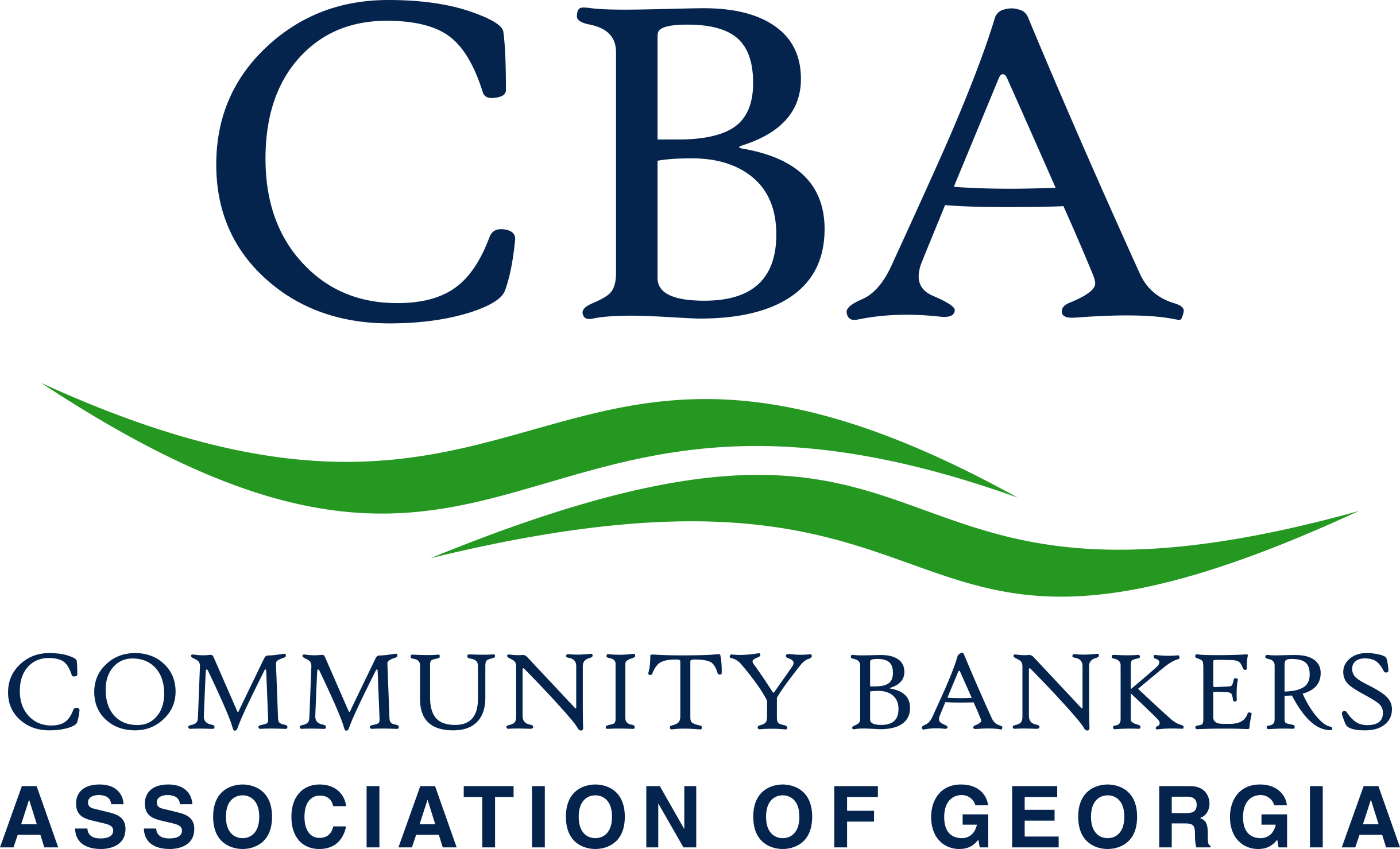2024 Commercial Lending Bootcamp
In-Person and Virtual
James-Bates-Brannan-Groover, LLP
231 Riverside DriveMacon, GA 31201-3415
United States
Event Details
Commercial Lending Bootcamp
Are you new or somewhat new to commercial and business lending, or do you need a refresher? Is it your job to support the lending team and need to learn more? Do you understand the ins and outs of loan structuring, along with the role of a loan agreement and its covenants? Questions about commercial real estate (CRE) underwriting and cap rates? Want some tips to make a better loan write-up? Want to learn how loan pricing works and how loan profitability is measured?
This three-day seminar is for you. We cover five topics with case studies and group exercises to demonstrate key issues. It’s a mix of some number crunching, bring a pencil and calculator, and mostly non-quantitative learning.
INSTRUCTOR: 
Richard Hamm
Advantage Consulting & Training
The topics that will be addressed are:
Topic 1: Loan Structuring Concepts & Case Studies
It has been said that there are four basic keys to good commercial loan structuring. Keys that improve your day-to-day efficiency, make your portfolio more self-policing and improves customer service. We’ll explore these four keys, along with some terminology (What is working capital? What are important features of personal guarantees?) and other tips. We then apply these keys to four basic types of commercial loans, along with key areas of analytical focus and common problem areas. This will include seasonal loans.
Topic 2: Loan Agreements & Covenants
Loan agreements are much more common these days, but some lenders and their teams are not well-versed in the role of a commercial loan agreement. In this segment you will learn two important components of a typical loan agreement, the objectives achieved by covenants, and some practical tips for setting and monitoring covenants.
Topic 3: CRE Cash Flow and Cap Rates
CRE loans remain an important component of community bank portfolios, so it’s time for some number crunching, and how to properly develop the cash flow of an income-producing property (“non-owner-occupied”). What are the key distinctions between owner-occupied and non-owner-occupied? What are the main components of CRE cash flow? Learn about some items that affect the cash flow and the bank’s debt service coverage (DSC), but do not likely affect the property’s market value. What is the role of a capitalization (“cap”) rate? We’ll also cover issues that arise from working with the common CRE tax forms.
Topic 4: Strategic Loan Pricing
This segment covers the basic principles of loan profitability, based on the financial structure of your bank. More importantly, how the financial characteristics of your bank sometimes give you a pricing advantage, and sometimes a disadvantage. Included are suggestions for winning more bid or multi-bank-competition situations, plus how important small pricing increments (as little as 1/4th or 1/8th of a percentage point) are to bank profitability. We'll discuss getting premiums for taking risk and for adding value to the customer relationship, and ways to compete with a lower rate for volume or when you are able to mitigate risk better than your competitor can.
Topic 5: Loan Packages & Business Writing
We step away from the numbers and finish our three days with ways to improve how you write up the loan, especially in the up-front underwriting and approval process. What should be included? How can I improve the content? What format should be used? This segment explores effective loan packages and credit memos, from tone and style, all the way to examples of wording and a before and after memo example.
In Summary, Some Key Topics to be Covered Over Three Days:
- Understanding your bank’s goal(s) in structuring the loan
- Identifying the goals of your customer and the resulting credit needs
- Applying these concepts (using cases) in four key loan types: seasonal, bridge, term and operating lines of credit
- Reviewing common mistakes and lender errors in the four key loan types
- Understanding the typical structure, format and goals of loan agreements and covenants
- Developing, setting and monitoring financial covenants
- Brief overview of a borrowing base and other asset-based lending concepts used for underwriting and monitoring traditional operating lines of credit
- CRE net operating income (NOI) concepts
- Understanding key variables: vacancy, management fees and replacement reserves
- Capitalizing the NOI to estimate value using a cap rates, plus how cap rates are derived
- How to use a simple CRE worksheet to explore the major issues, including transaction-level stress-testing and sensitivity analysis
- Differentiating loan interest rates to reflect relative risk, plus knowing that you CAN win the borrower's business on a basis other than the lowest price.
- Comparing relative loan pricing within your portfolio
- Watching out for loans that are typically under-priced
- Describing the qualities of effective business writing
- Communicating more effectively with the “cover pages” summarizing the loan(s)
- Avoiding memorandum confusion and overload
- Applying the unique issues in using numbers within your narrative
For More Information:

WHO SHOULD ATTEND:
Community bankers, small business lenders, commercial lenders, private bankers, credit analysts, portfolio managers, loan review specialists, special assets officers, lending managers and credit officers involved in the commercial lending process. Also very appropriate for lending support personnel.
